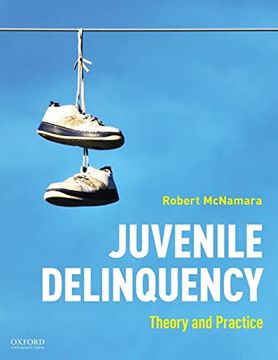Reseña del libro "Juvenile Delinquency: Theory to Practice (en Inglés)"
Focusing on today's students, this comprehensive juvenile delinquency text debunks myths, engages students to learn key theories, and provides compelling applications that students will find relevant and useful. Preface: The study of juvenile delinquency has a long and fascinating history. From the early days of treating juveniles like miniature adults to the Child Savers Movement, where advocates attempted to address issues stemming from the neglect and abuse of children. In the 1980s, the rise of violent juvenile gangs became a part of the larger narrative on delinquency, in part due to the discovery of crack cocaine and the turf battles that emerged over the distribution of the drug. In the 1990s, concerns about the violence and an increase in dangerous delinquents led to the prediction of a super predator of delinquent. Concerns about this group, along with the perception that the juvenile justice system was inadequate in addressing violent offenders, resulted in greater use of juvenile waivers, where the youthful offender is waived from juvenile court jurisdiction to adult court. Despite these concerns and perceptions about the dangerousness of juvenile offenders, in recent years, there has been a considerable decline in delinquency arrests along with decreases in the use of detention/incarceration in the past two decades. Generally speaking, the juvenile justice system has done an adequate job of diverting offenders before they become a part of the system and rehabilitating them when they become involved in it. However, it is important that we not to lose sight of how significant social issues shape our understanding of crime and delinquency. For instance, as the United States and other countries grapple with the enormous impact of COVID-19, including stay-at-home orders, the closing of schools, massive unemployment for millions of workers, and numerous risks for patients and health care workers, there are implications for juvenile offenders. While we are continuing to learn more about the COVID-19 disease, one of the more troubling trends is the high percentage of minorities who are affected by it. As troubling as a pandemic is for this country, in 2020 we have also seen a number of high-profile cases in which an African American was killed by a police officer or while they were in police custody. This trend is certainly not a new one-the disproportionality of African Americans in the justice system has a long and storied past. The social and political backlash to the recent events involving George Floyd's death have resulted in peaceful protests by citizens wanting meaningful change, violent demonstrations and looting by others, as well as demonstrators dismantling many statues of historical figures due to their involvement in or support of the slave trade. These protests, along with some political leaders stoking the fires of division, have damaged the social fabric of the United States. At the base of the protests and debates, such as whether Black Lives Matter or All Lives Matter, or whether or not to defund police departments, have, at their root, a history ofexploitation of African Americans in the criminal justice system. The fascinating thing about the disproportionality of African Americans (and Hispanics/Latinos) in the system is that they are not confined to adults; the juvenile justice system struggles with the same type of disproportionality as its adult counterpart. Perhaps the most intriguing dimension of these findings is that there is little debate about them-unlike most social issues, when it comes to the challenges minorities face in the justice system, there are few if any debates about whether such a trend exists. The controversy stems from why these trends are occurring, but no one disputes whether the trends are real ones-in either the adult or the juvenile justice system. For our purposes, these protests, debates, and controversies are extraordinary reminders that the study of delinquency does not exist in a vacuum and that large scale social issues can dramatically influence our understanding of why youth commit criminal offenses. In the following pages, we attempt to balance the discussion of delinquency with a theoretical understanding and data typically found in sociological research, along with data and research on how to apply this information in a practical way. This juxtaposition of sociology and criminal justice is rather unique but it results in a more seamless and comprehensive understanding of delinquency. As someone trained in both sociology and in criminal justice, my hope is that such a collaboration helps students, faculty, policymakers, and the general public, to grasp the complexity involved in understanding and addressing delinquency. To accomplish this goal, throughout the textbook I attempt to provide examples of how to apply theory to reality, mini-research projects designed to help students understand delinquency in their local communities, as well as putting readers in real-life scenarios where they must consider the many factors involved in making a difficult decision and then decide how to proceed. Additionally, to address the frustration many students (and faculty) sometimes experience with the multitude of programs to reduce or prevent delinquency, where it is easy to think that "nothing works," I include examples of programs that are in fact effective. Of course, while I have done my best to provide the most up to date and accurate information about a variety of topicsrelated to delinquency, any mistakes, omissions, or oversights, are mine to bear. Features Used in this Text: Chapter Scenarios: these are real life situations in which readers are presented with a case that unfolds throughout the chapter. In the context of learning the concepts and theories, students learn how these apply to the scenario. Video Interviews: interviews with convic

